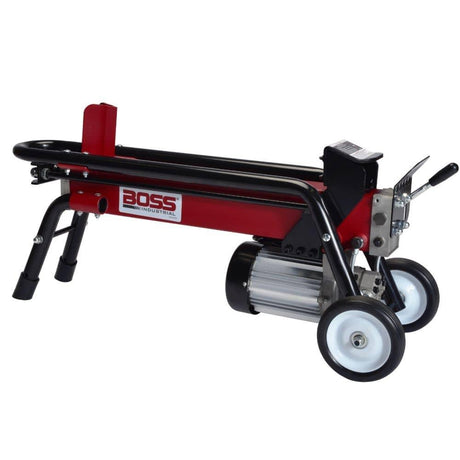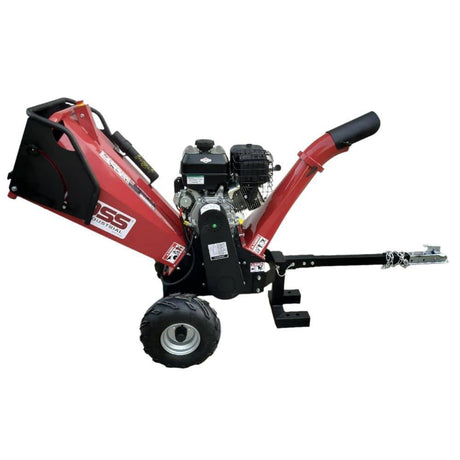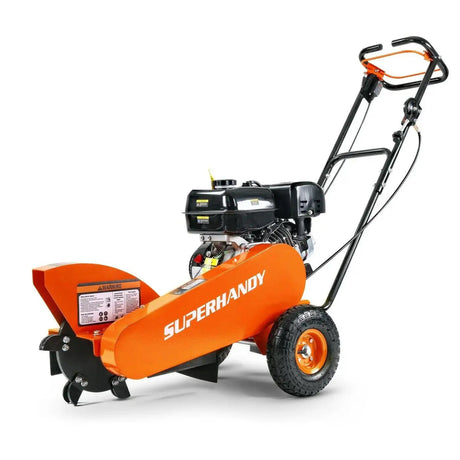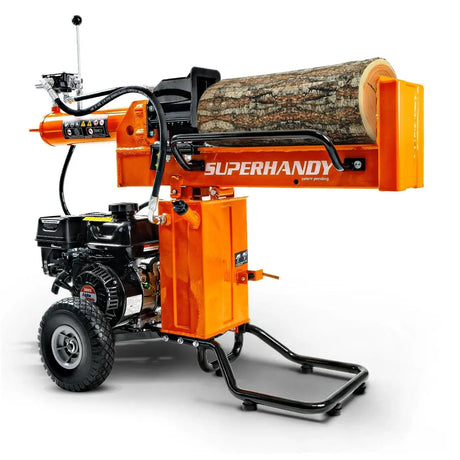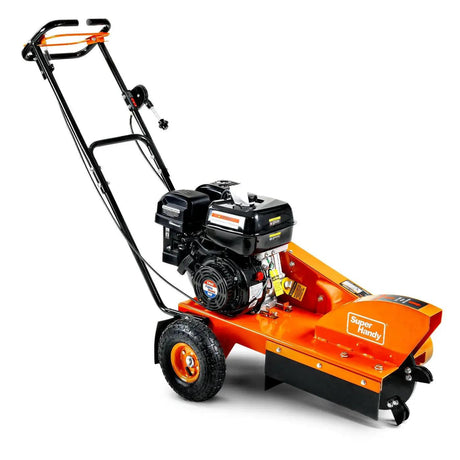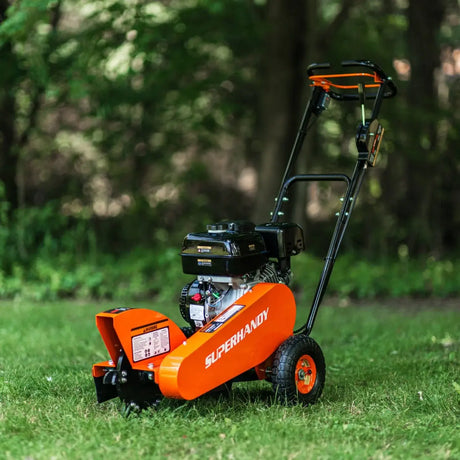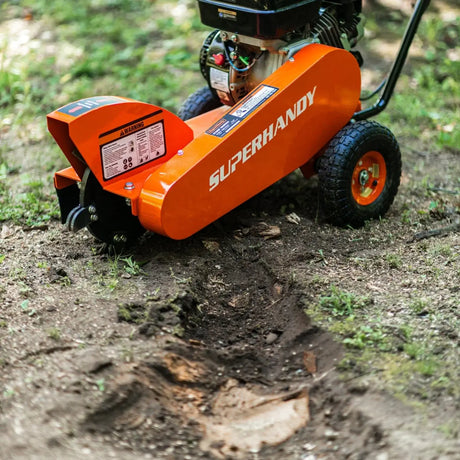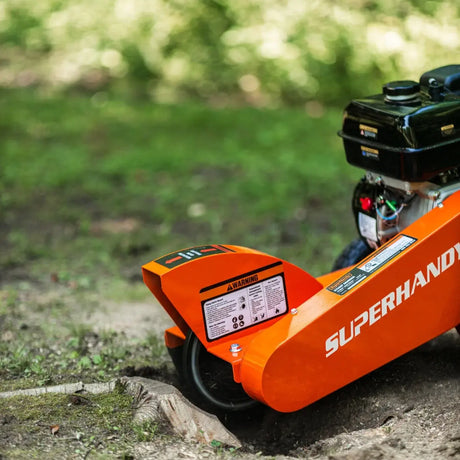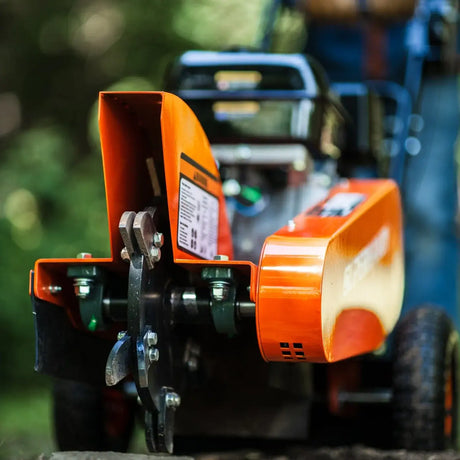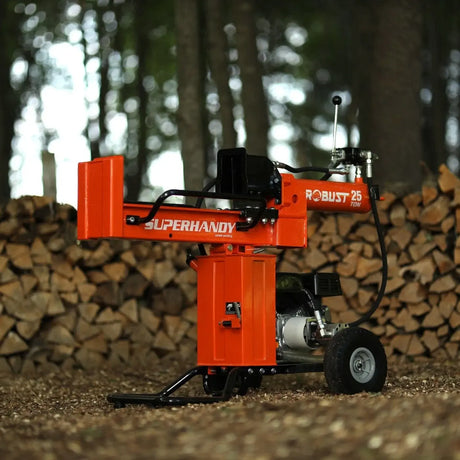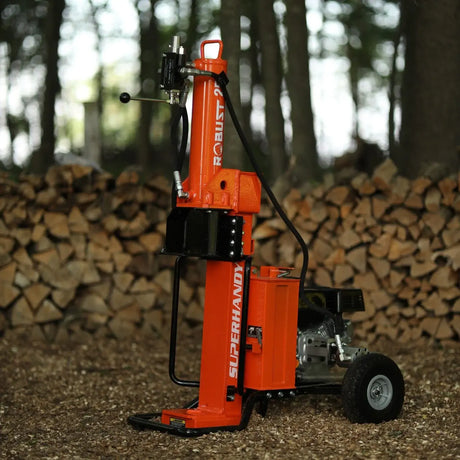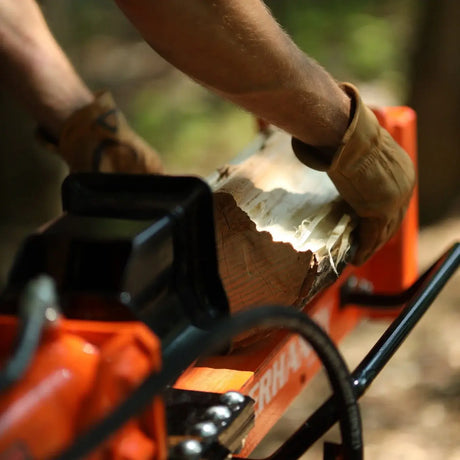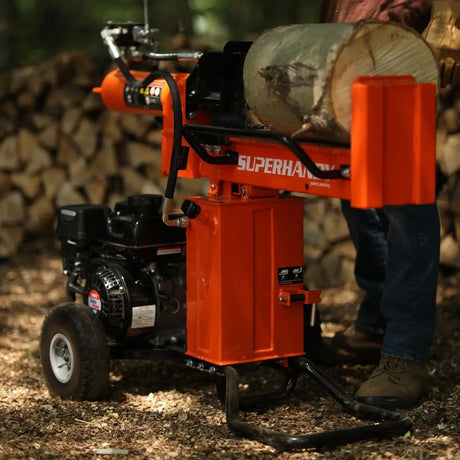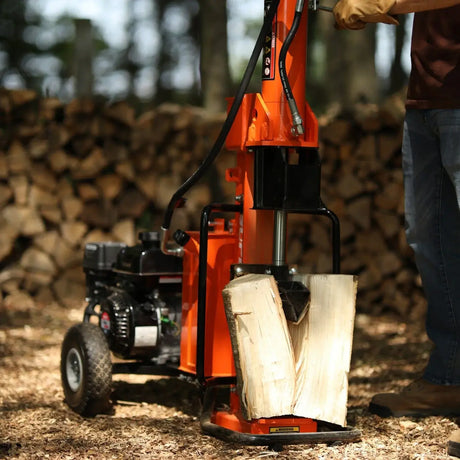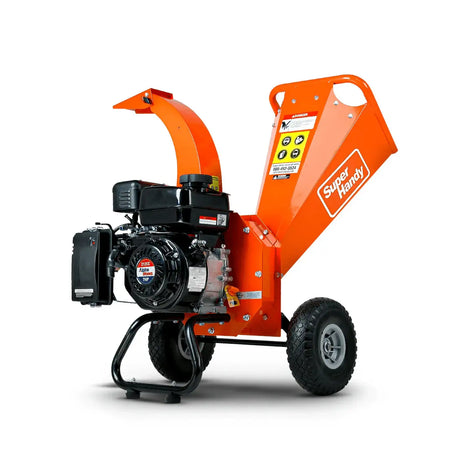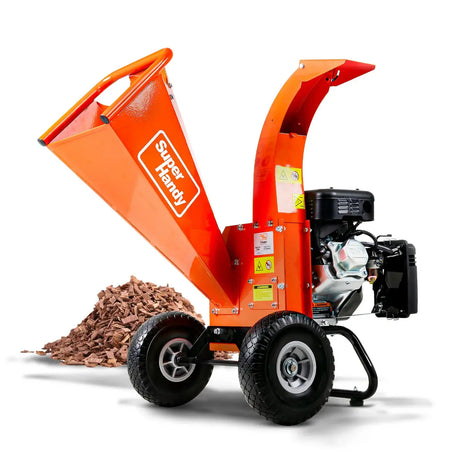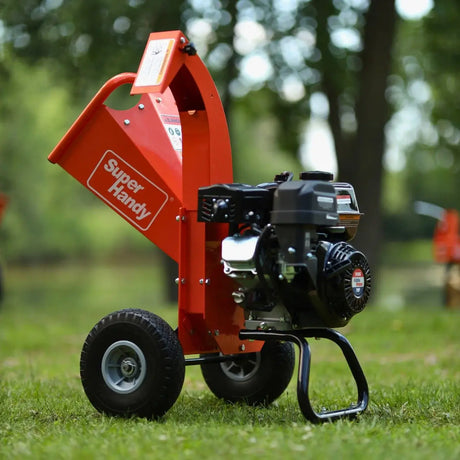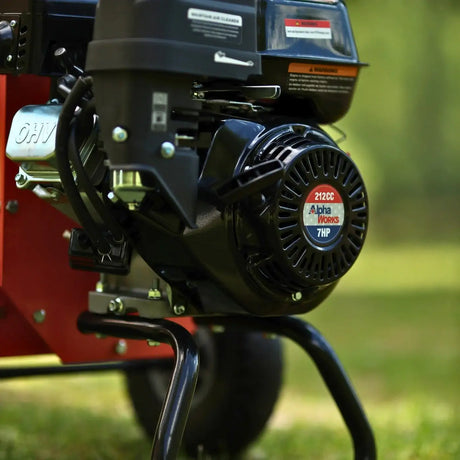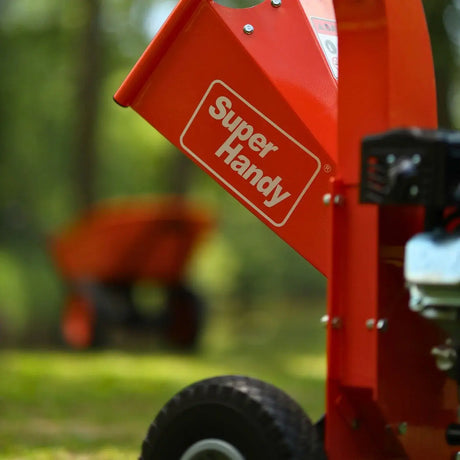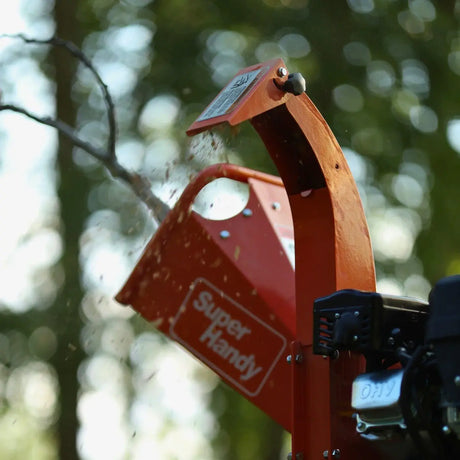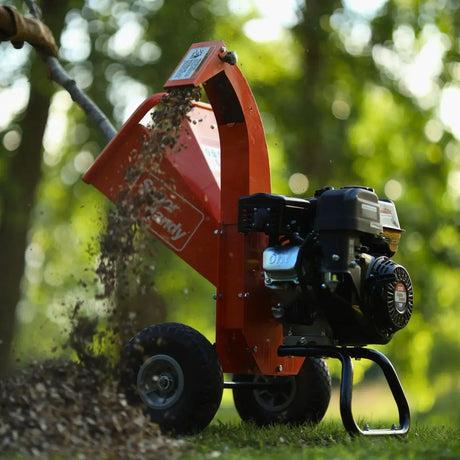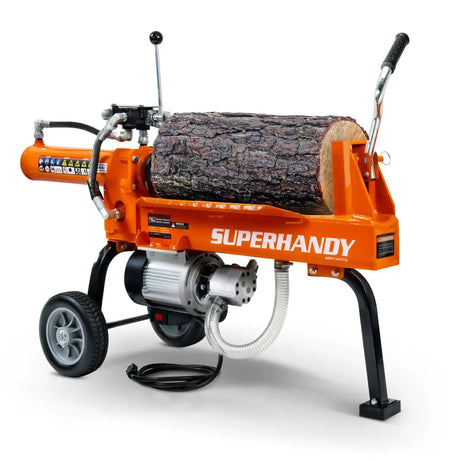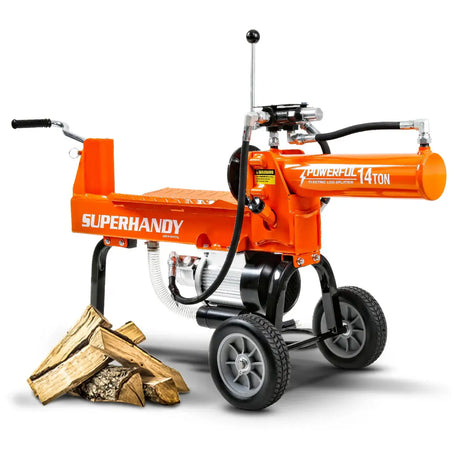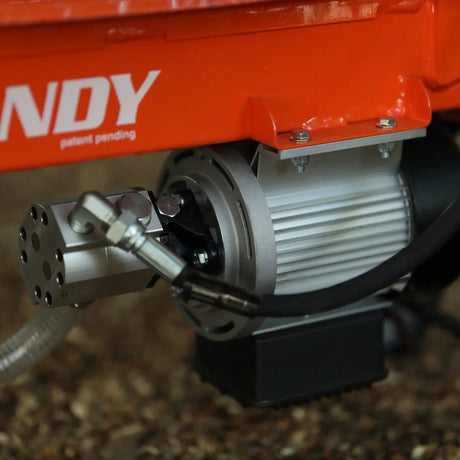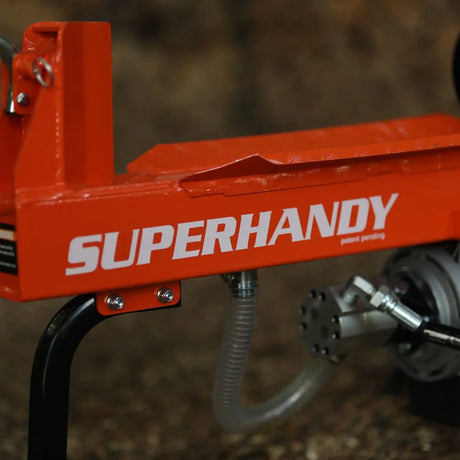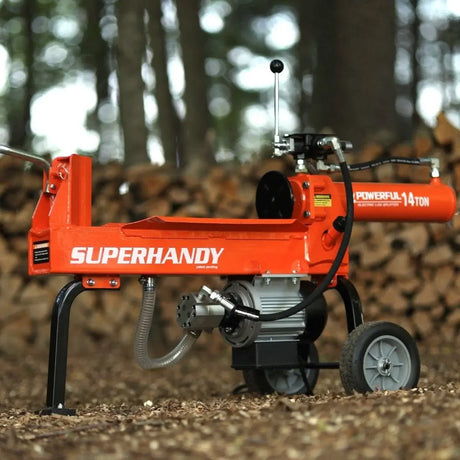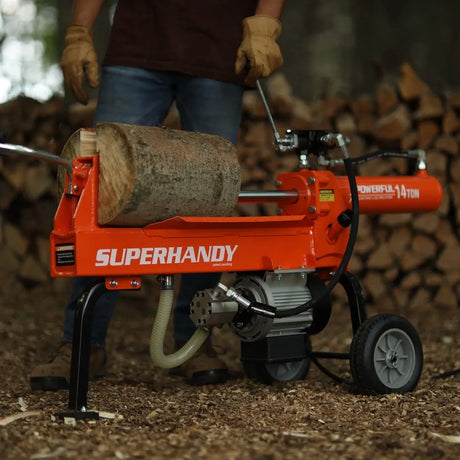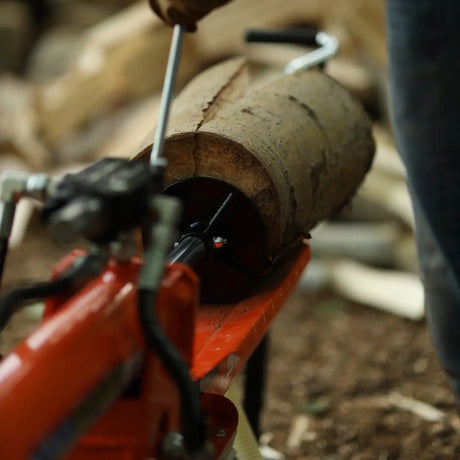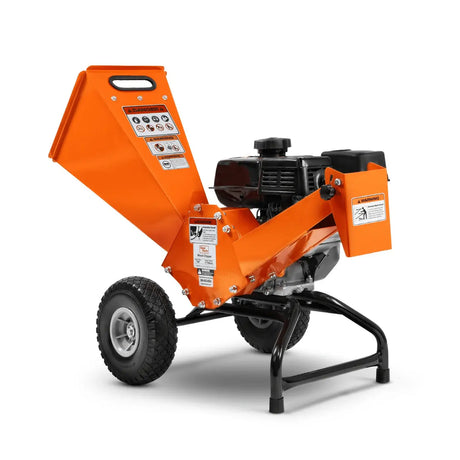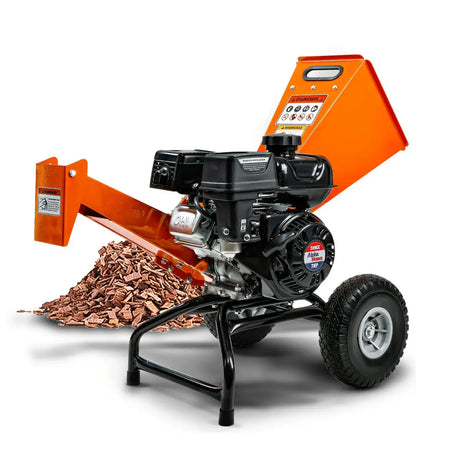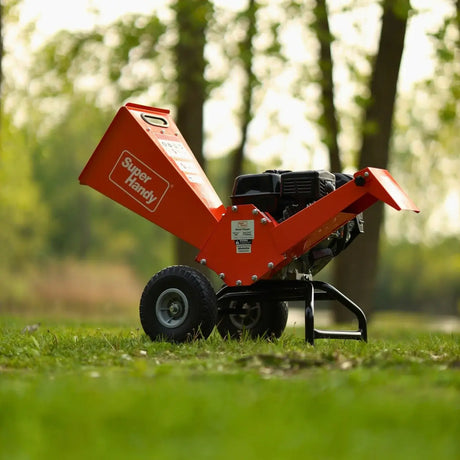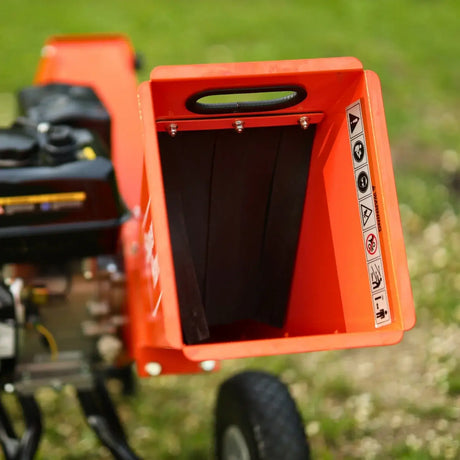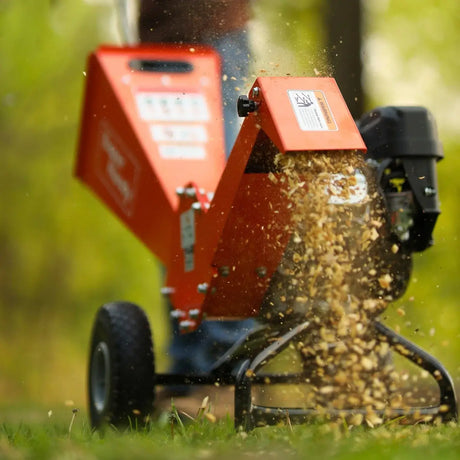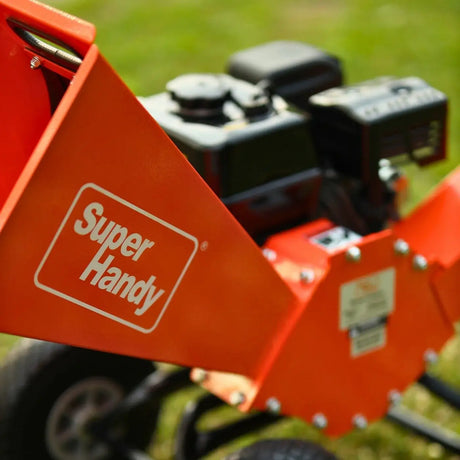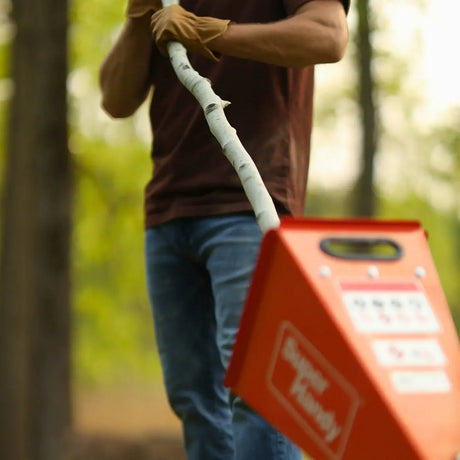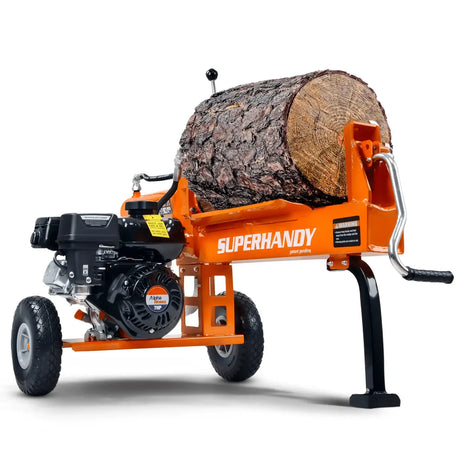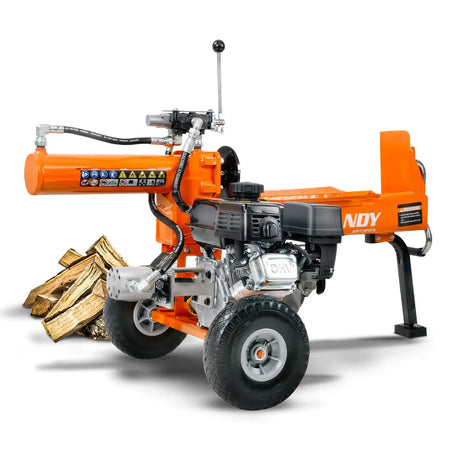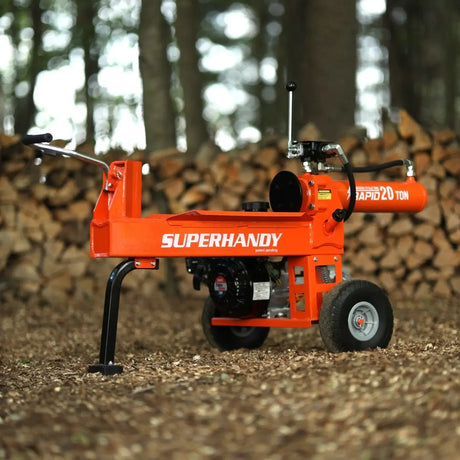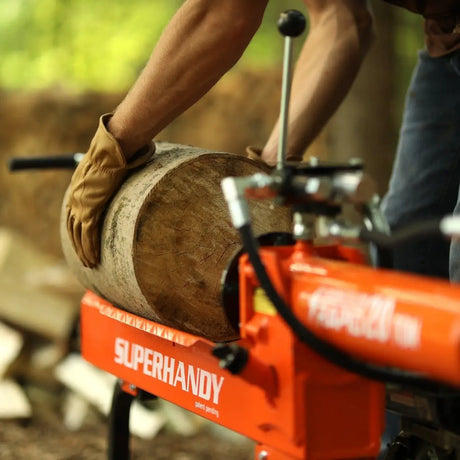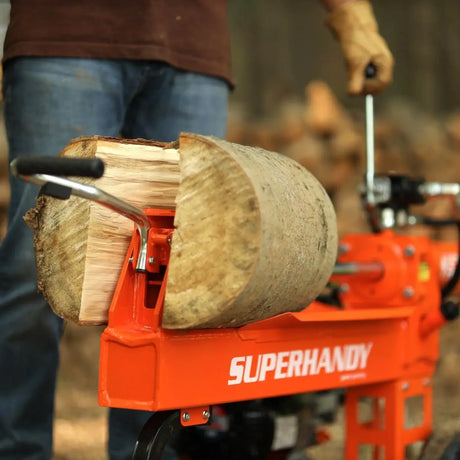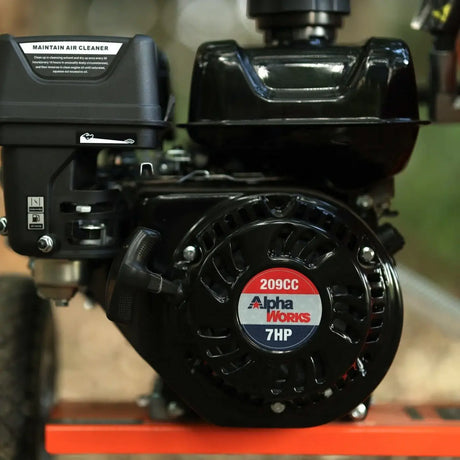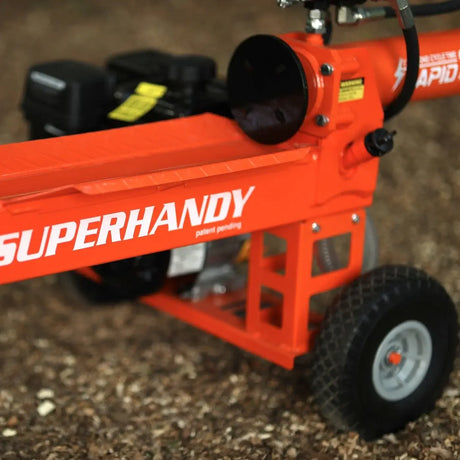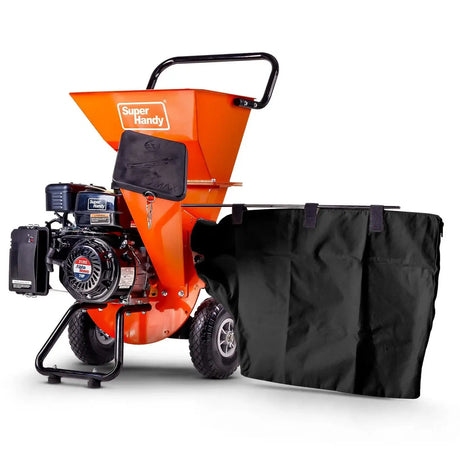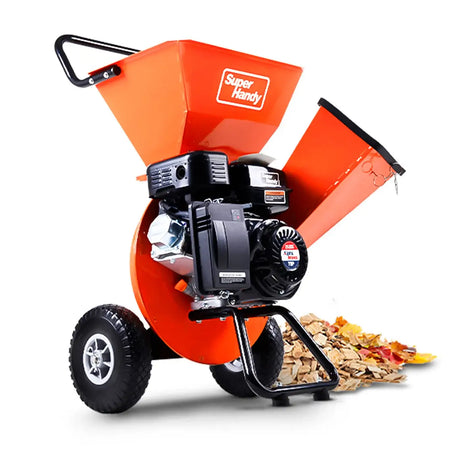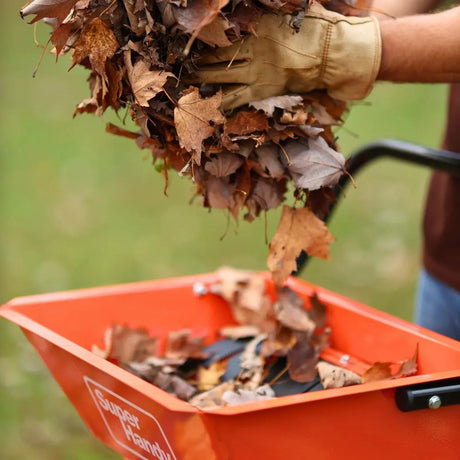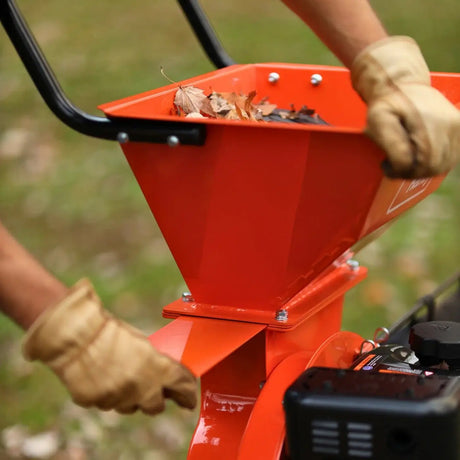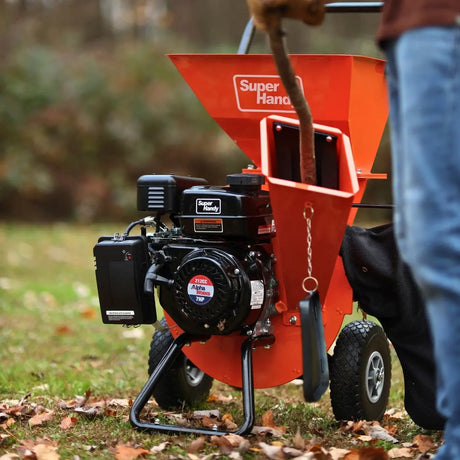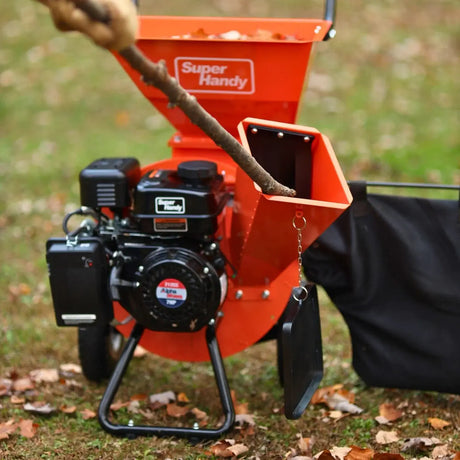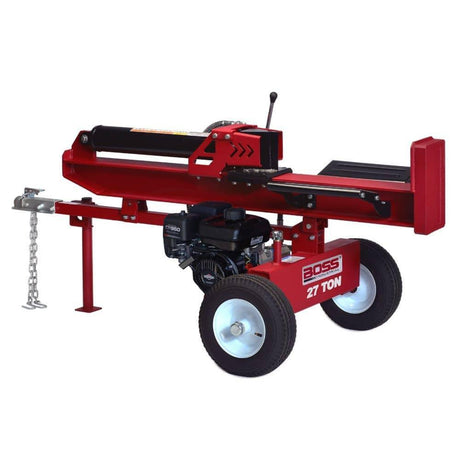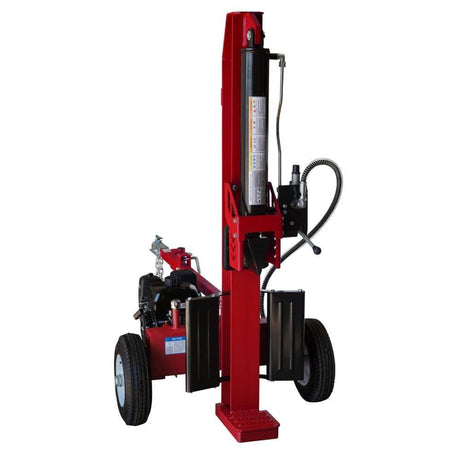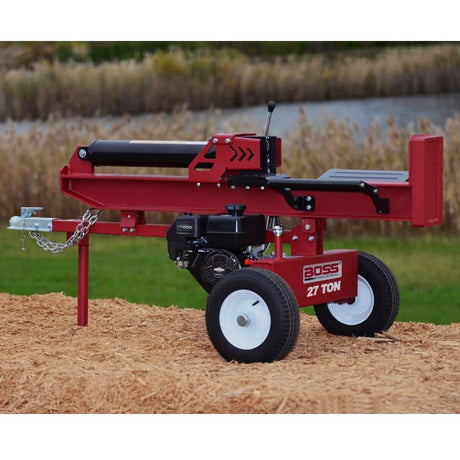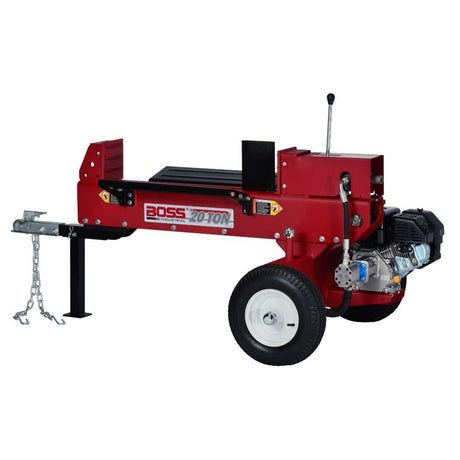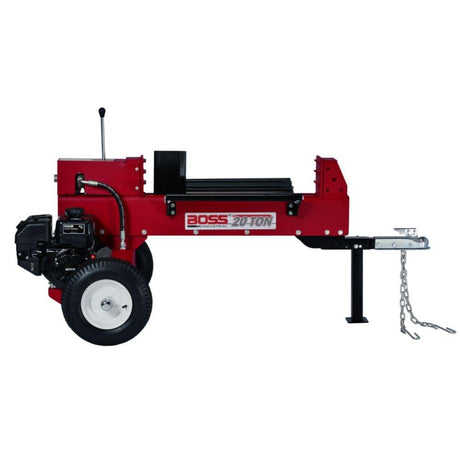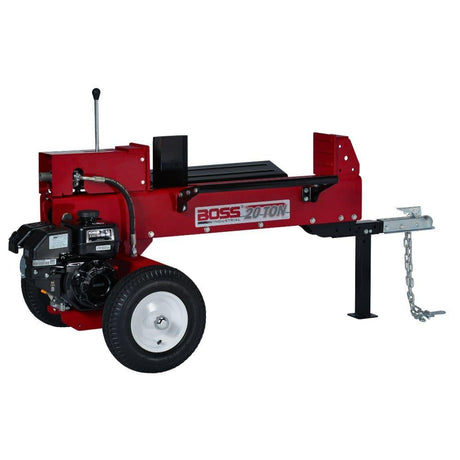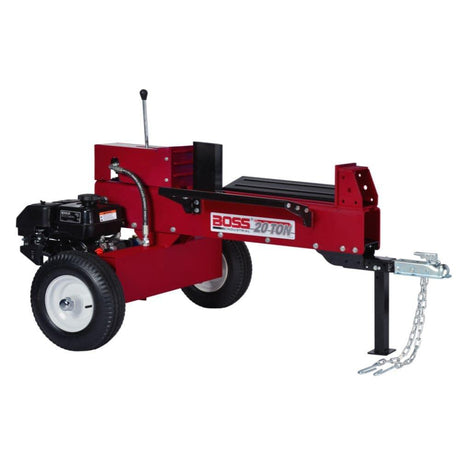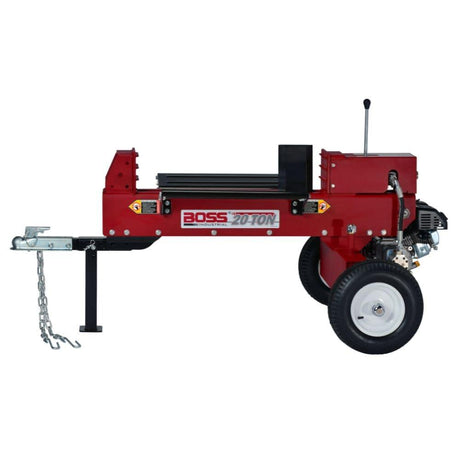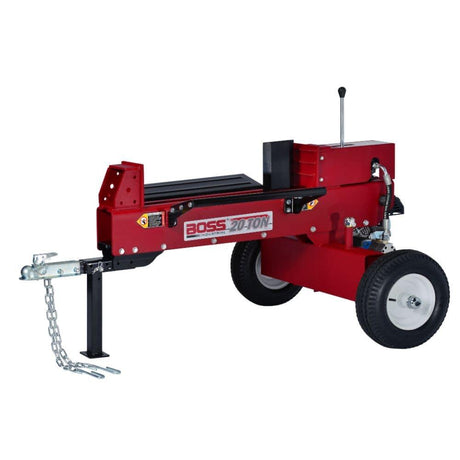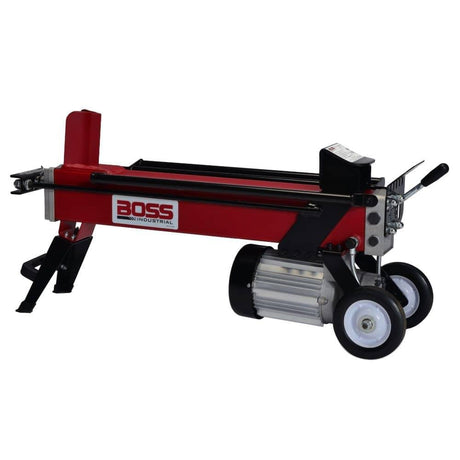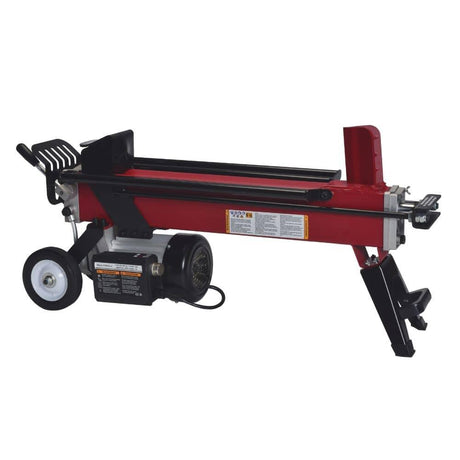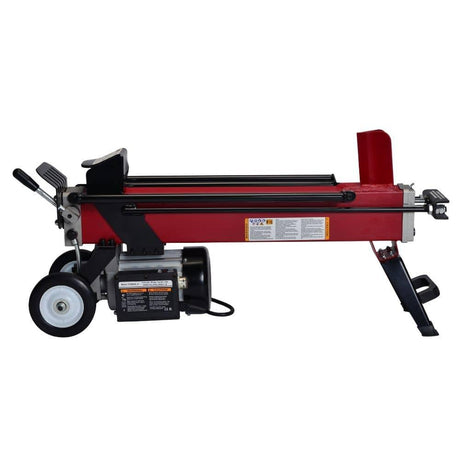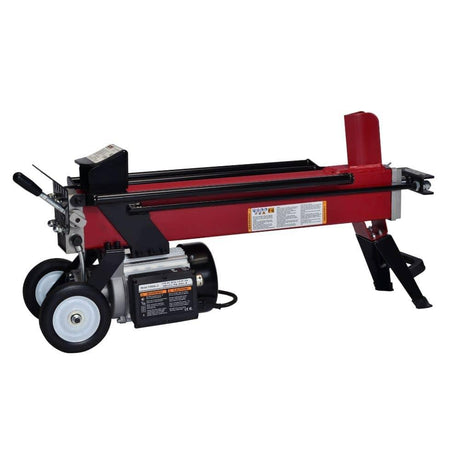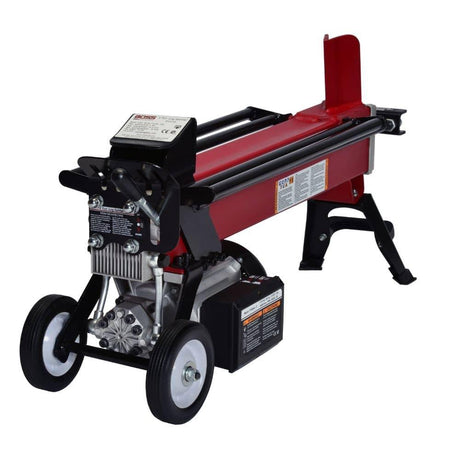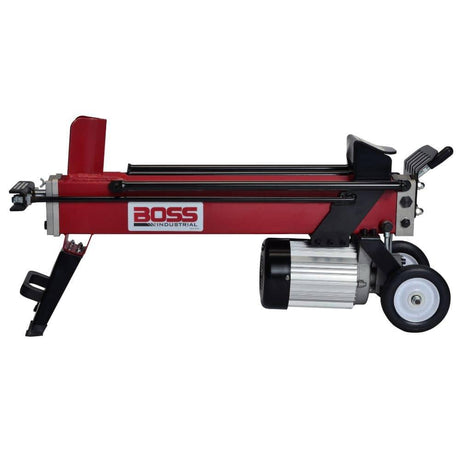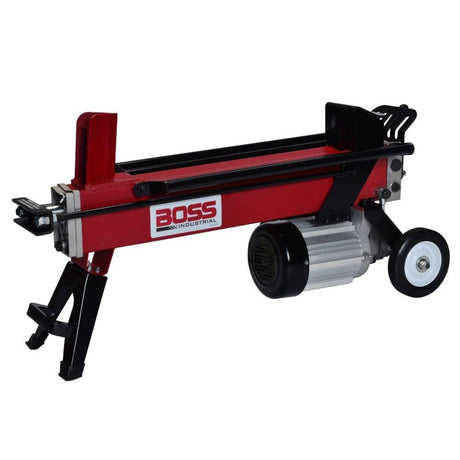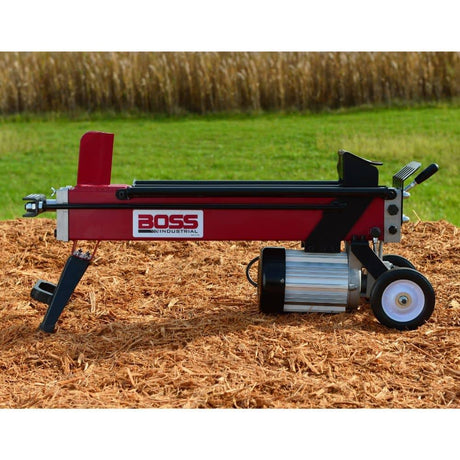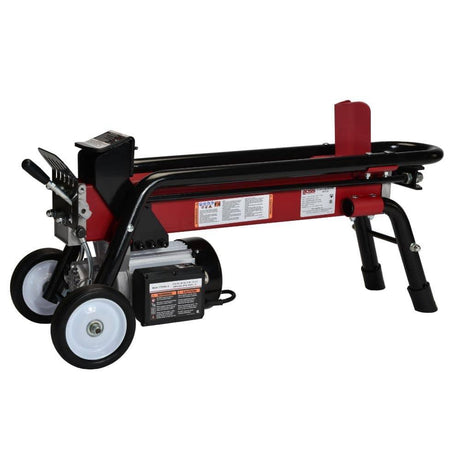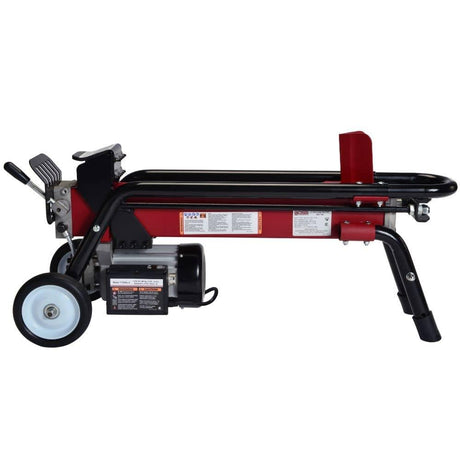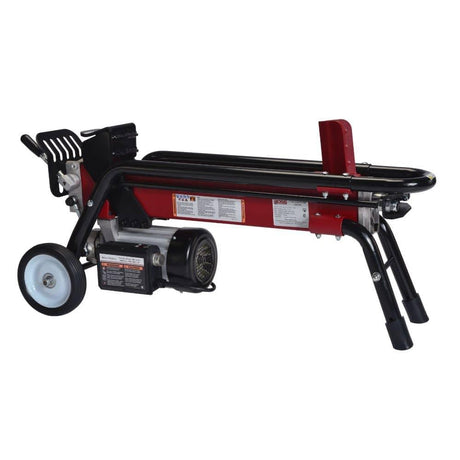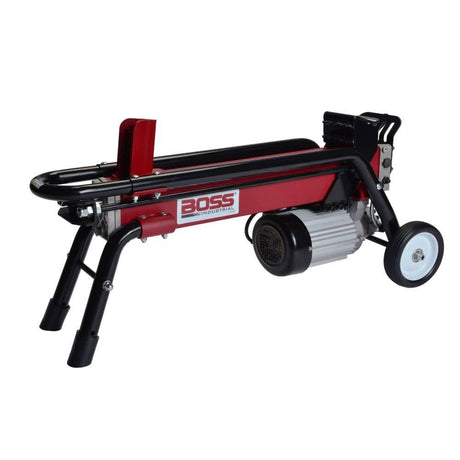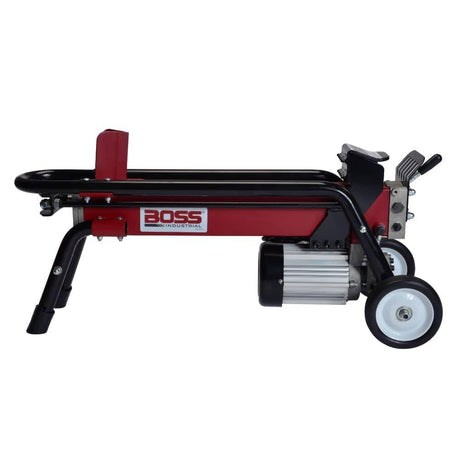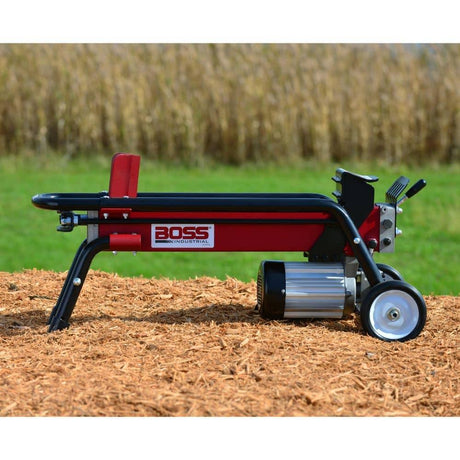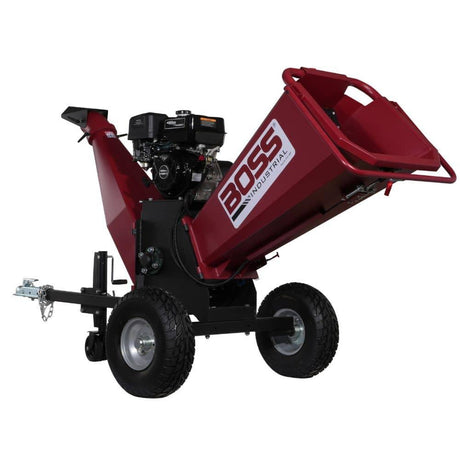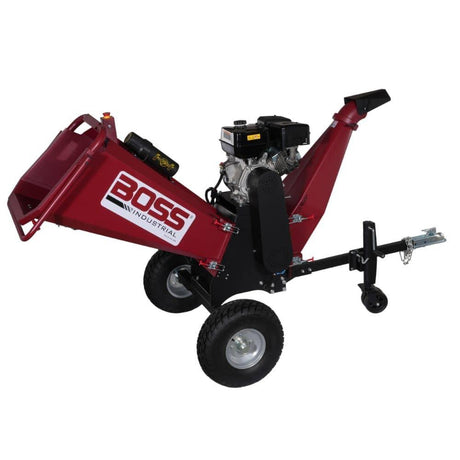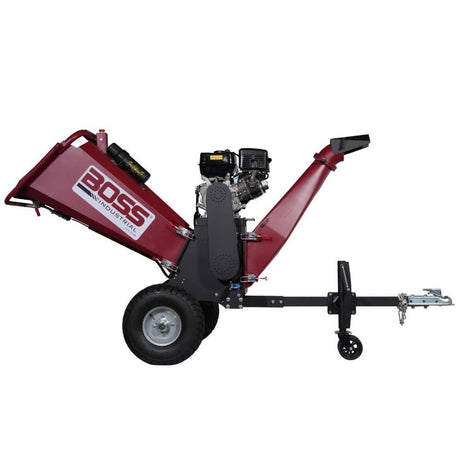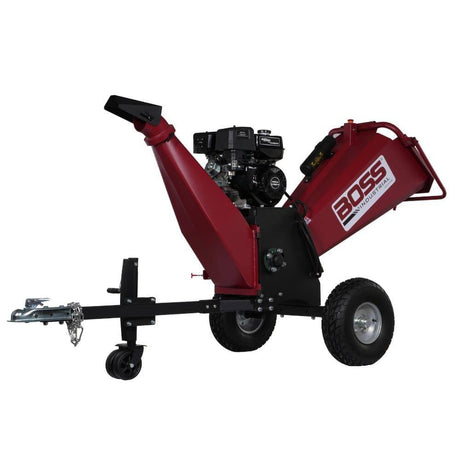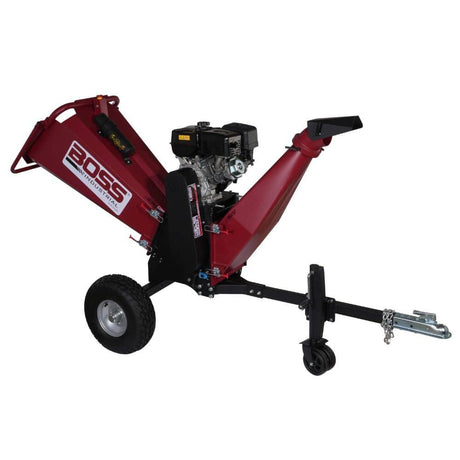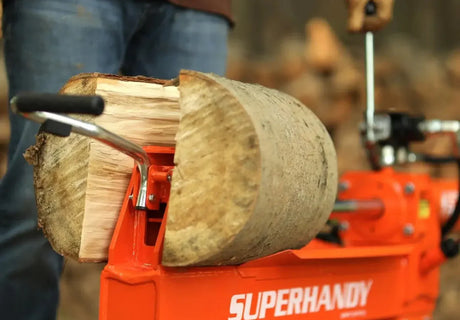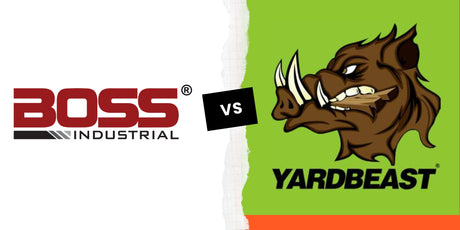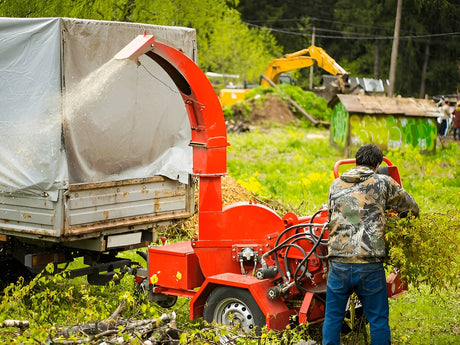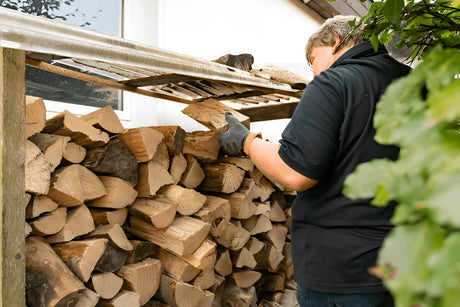Why Regional Differences Matter in Log Splitter Selection
Climate Impacts Wood Type and Drying Time
Your climate plays a major role in how you split logs. In colder regions, hardwoods like oak and maple are more common because they burn longer and produce more heat. But these woods are dense. You'll need a log splitter with more force-at least 22 to 30 tons-to handle that kind of job.
In contrast, warmer climates tend to have pine, cedar, or softer trees. These require lower tonnage and are easier to split, even with a small electric log splitter.
Moisture is another factor. Wet or green logs take longer to dry in cold climates, which means you may be splitting wood that hasn't fully seasoned. Wet logs need higher tonnage and can slow down your splitter's operation. That's where hydraulic log splitters shine-they're built to exert force without stalling.
Expert tip: A general guideline is to allow 6-12 months of drying time before you split logs for firewood, especially in colder climates.
Frequency of Firewood Use by Region
Where you live often dictates how often you'll split wood. In the Northern US or Canada, heating with firewood is still common. You're likely splitting logs weekly or monthly through the fall and winter. That demands a gas log splitter with plenty of power and fast cycle time.
In southern regions, you may only need to split wood for outdoor fireplaces or bonfires. In those cases, a wood splitter with a compact frame and lower tonnage will do just fine.
If you're only processing logs a few times a year, you might even consider manual log splitters-they're affordable, compact, and require no fuel or electricity. But for large quantities, or if you're working with oak or frozen wood, manual options won't cut it.
Real-life example: A customer in Minnesota upgraded from a 15-ton electric model to a 30-ton gas powered log splitter after struggling to split frozen oak logs in winter. The new machine handled the job with ease, saving hours of labor.
Key takeaway: Log splitters vary widely, and your regional wood type and usage frequency should always guide your choice. You don't want to overpay for power you don't need-or underbuy and end up frustrated mid-season.

Key Regional Factors That Influence Your Decision
Type of Wood Common in Your Area
Start with the kind of wood you're most likely to split. This single factor has a big impact on the type of log splitter you need.
- Hardwoods like oak, hickory, and maple are dense and tough. You'll need a gas powered log splitter with at least 22-30 tons of splitting force. These are ideal for Northern regions or mountain areas where hardwoods are abundant.
- Softwoods such as pine, cedar, or spruce are easier to split. In these regions, typically warmer or coastal, a lower tonnage unit-around 10-20 tons-will be more than enough. An electric log splitter can handle these types of logs just fine.
Reminder: The harder the wood, the more pressure your splitter needs to exert.
Average Log Size and Seasoning Practices
Not all logs are created equal. If your area typically has logs with a larger diameter-say 18-24 inches-you'll need a splitter with higher tonnage and a longer stroke. For smaller logs, under 12 inches in diameter, a mid-size wood splitter will do the job efficiently.
You also want to consider how logs are seasoned in your area. Some regions split logs before drying to speed up the process. Others dry logs whole and split later. Drier logs split easier, while green or semi-seasoned logs require more force.
General guideline: Always buy a splitter that can handle your biggest log size. Don't base it on the average-plan for the worst-case log.
Power Source Availability and Use Location
Where you'll be using your wood splitter matters just as much as what you'll be splitting.
- Electric splitters are perfect for homeowners in suburban or urban areas. They're quiet, efficient, and don't produce fumes-a plus if you're working in a garage or near neighbors.
- In rural or off-grid areas, access to electricity may be limited. That's where a gas log splitter shines. You get portability, more power, and no cords to deal with.
Also, keep in mind how close your woodpile is to your power source. Even the best log splitter won't help if the cord won't reach or the outlet can't handle the load.
If you're new to wood splitting, our log splitter beginner's guide explains types, tonnage, cycle times, and setup basics.
Tip: If your property is large and you move between stacks, look for a splitter with a towable frame and large wheels. A gas powered splitter is usually the better fit for that kind of work.
Recommended Log Splitter Types by Region
Cold Climates (e.g., Northern US, Canada, Europe)
In cold climates, everything works against you-frozen logs, dense hardwoods, and snow-covered woodpiles. You'll need a gas powered log splitter that's built to handle heavy duty tasks.
- Choose models with 20-30 tons of splitting force. These can easily split logs made of oak, maple, or other tough species, even when frozen.
- Cold temperatures thicken hydraulic fluid. Look for hydraulic log splitters with cold-weather oil compatibility and reinforced components.
- Select a splitter with reliable startup and solid construction. Thick steel frames, strong wheels, and low-temp-resistant hoses matter.
Many log splitter buyers in the north prefer commercial log splitters for seasonal volume. If you're preparing large quantities of firewood, that investment pays off quickly.

Warm Climates (e.g., Southern US, Asia-Pacific)
Warm regions usually don't require as much firewood, and the logs tend to be softer. Here, portability and convenience matter more than raw power.
- A lower tonnage electric log splitter-in the 10-20 ton range-is more than enough for pine, cedar, or storm cleanup tasks.
- Since these splitters don't need gas, they're great for personal use in garages, sheds, or patios. Plus, they're quieter and cleaner during operation.
- Look for models with compact designs, easy storage, and safety features like emergency stop buttons.
For lighter log splitting, an electric splitter or even manual log splitters can be the best wood splitter option in these climates.
Transitional Zones (e.g., Midwest, Southern Europe)
If your region has cold winters and mild summers, you'll need flexibility. The types of log splitters that work here offer both power and convenience.
- A good combo is to use an electric splitter for day-to-day log splitting and keep a gas powered splitter ready for big jobs like post-storm cleanup or prepping for winter.
- You'll need a splitter that can handle softwoods most of the year, but still split tougher logs when needed. Look for models with adjustable cycle times, dual-position splitting (horizontal/vertical splitters), and log cradles.
- Hydraulic log systems in this region should support higher tonnage, but don't need to be overkill.
Key point: In variable climates, go for versatility. The right log splitter is the one that adapts with your changing seasons.
Feature Checklist to Match Splitter to Region
Tonnage and Splitting Force Requirements
Tonnage is your starting point. It tells you how much force your log splitter can apply to split logs. The rule is simple: harder wood and larger logs need more force.
- Softwoods (like pine, spruce) typically need 10-15 tons.
- Hardwoods (like oak, hickory) may need 22-30 tons, especially if not fully seasoned.
- A general guideline: for a 12-inch diameter log, aim for at least 15-20 tons.
If you're unsure, go with the higher tonnage option. Log splitters vary widely, but overkill is better than being underpowered.
Still unsure how many tons of splitting force you need? Check our log splitter size chart to match your machine to log size and wood density.
Cycle Time and Efficiency for High-Volume Regions
In regions where you split wood in bulk-whether for heating or regular cleanups-cycle time becomes critical.
- A cycle time under 15 seconds is ideal for steady productivity.
- Look for hydraulic log splitters or gas powered splitters with shorter cycle times if you're handling large quantities.
- For smaller jobs or warm climates, a longer cycle time (20-25 seconds) is acceptable, especially on a budget-friendly electric log splitter.
Log splitting speed directly affects how long the job takes. If you split weekly, shaving seconds off every log adds up fast.
Portability and Storage Needs by Climate
Portability matters more in remote or rugged areas. Gas powered log splitters with tow bars and large wheels can move easily across uneven ground.
- In suburban zones, lighter electric splitters with handles and compact frames work best for moving through gates or garages.
- Always consider storage: cold zones may require indoor space during the winter to protect components from freezing or rust.
- Foldable log splitter designs or upright vertical splitters save room in tight sheds or garages.
Choose a splitter that fits your actual terrain-not just your firewood stack.
Cold-Weather Enhancements and Construction Materials
In colder climates, proper maintenance and materials become even more important.
- Use low-viscosity hydraulic oil. It flows better in cold temperatures and keeps hydraulic log systems working smoothly.
- Check for coated steel frames to resist salt, moisture, and debris buildup during winter storage.
- Reinforced hoses, seals, and emergency stop switches that remain responsive in the cold are worth the extra investment.
Cold shortens the life of many machines-but the right log splitter built for harsh weather will keep splitting when others stall.
Comparing Electric vs. Gas Models by Region
When Electric Splitters Make More Sense
An electric log splitter shines in the right setting-mainly suburban or mild-climate regions.
- They're quiet, clean, and don't produce fumes, which makes them ideal for indoor use (like garages or sheds).
- Plug it in and go-no gas, no pull-start, no mess. That's a big deal for personal use or smaller jobs.
- Electric models are also easier to maintain. Fewer moving components means fewer breakdowns.
You'll find this type of wood splitter is best suited for softwoods, smaller logs, and occasional use. If you don't split logs weekly, and you live in an area with easy access to power, this is a practical option.
Just be aware: lower tonnage and smaller diameter capacity means it's not made for heavy duty tasks or frozen oak logs.
When Gas Splitters Are a Better Fit
A gas log splitter steps in where electric log splitters top out.
- These models pack more force, handle larger logs, and don't rely on wall outlets. That's essential for rural areas or properties without easy access to power.
- If you're working with hardwoods, oversized firewood, or prepping for a long winter, a gas powered log splitter (or other gas powered splitters) will handle it better.
- You'll find many hydraulic log splitters in this category, with rugged builds, faster cycle time, and serious splitting force.
Yes, they need more maintenance, and they're louder. But when the job gets tough, gas powered wins-especially in cold climates or for frequent use.
For log splitter buyers handling bigger jobs, they're often the best log splitter option, even with a higher upfront cost.
Wondering how much fuel your gas splitter will need? Check our log splitter fuel efficiency table to plan your refueling needs.
Summary: Choose the Right Splitter Based on Where You Live
Regional Fit Guide (Condensed Table)
Here's a quick-reference table to help match your log splitter to your region's real needs:
| Region | Recommended Splitter | Key Points |
|---|---|---|
| Cold climates | Gas powered log splitters (20–30 tons) | Handles hardwoods, frozen logs, and large diameter firewood. |
| Warm climates | Electric log splitter (10–20 tons) | Works well with softwoods, smaller logs, and limited storage. |
| Transitional regions | Dual setup (electric + gas) | Use electric for everyday tasks, gas for storm cleanup or bulk firewood. |
Where you live directly affects what kind of splitter will give you the best experience. Don't base your decision on specs alone-think local.
Final Advice: Match Climate, Wood, and Use Case
Choosing the right log splitter isn't just about what's powerful-it's about what's practical for your environment.
Ask yourself:
- What kind of logs do I typically split-oak, pine, wet, or seasoned?
- How often will I use the machine-weekly, seasonally, or after big storms?
- Is power source availability an issue? Do I need something quiet or something with more force?
- What's my typical log size, and how much storage space do I have?
Log splitters vary widely, and your goal isn't to get the biggest-you want the best log splitter for your region, your wood, and your lifestyle. A little careful consideration now saves time, strain, and money later.
Whether you go manual, electric, or gas powered, make sure it's a splitter built to handle your regional demands-and you'll be ready for every firewood season ahead.


